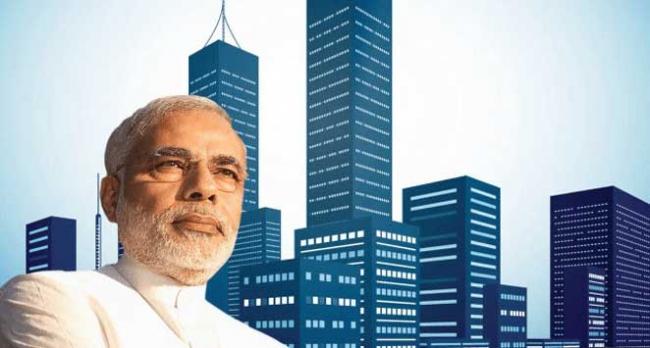
Impact of Pradhan Mantri Awas Yojana on The Real Estate Sector in India
- Home loans up to Rs.12 lakh qualify for interest subsidy
- Incentivizes developers to look beyond the affluent customer segment
- Private equity real estate firms have invested as much as USD 6.1 billion in the country
- Housing sector can now avail institutional funding at better terms and conditions
The Pradhan Mantri Awas Yojana, a brainchild of the present NDA government first envisaged in 2015, promises to make affordablehousing (wherein a particular family doesn’t have to spend anything more than 30% of the disposable income to reside) by 2022 a reality. The ‘Housing for All’ initiative rides on this policy that has expanded its scope of late in trying to accommodate the middle-income group (MIG), in addition to the lower-income groups (LIG) and economically weaker sections (EWS) of the society. Moreover, the quantum of home loan that qualifies for a subsidy on interest has been doubled from Rs.6 lakh to Rs.12 lakh.
How has the PMAY been a boost to India’s real estate sector?
The real estate sector in India has weathered a slump, owing to a mix of various factors. There was a time when a potential home buyer would just be another person sitting on the fence. However, with affordable housing policies such as Pradhan Mantri Awas Yojana, the realty sector seems to be back on track now. Here’s how PMAY has been a boost to the country’s realty sector.
- Today, while most realtors based out of the country’s metropolitan cities are sitting on unsold properties which often start from Rs.50 lakh or upwards, there is a dearth of as many as 20 million housing units, within the range of Rs.5-15 lakh, that would’ve had benefitted the less affluent, living in both the urban and rural parts of India. The PMAY, with its scope of loans up to Rs.12 lakh offered on an interest subsidy, aims to do just that; accommodate the poor and other economically weaker groups of the society. In doing so, it should be able to incentivize and encourage the realty sector to look beyond the affluent buyer segment based out of the cities.
- The carpet area (area to lay the carpet) is the total area that is enclosed within the walls of the house. The super built-up area, on the other hand, includes the ones that are not calculated within the carpet area such as balcony, lifts and other common spaces. Affordable housing schemes, such as the PMAY, are making it easy for the buyers to get a much better deal on their money. This, in turn, is also encouraging some of the leading developers in the real estate sector to test the affordable housing scheme waters – simply because of the fact that the super built-up to carpet area ratio will increase the average size of the unit by 20-30%.
- The four key features of the PMAY scheme – In-situ Slum Rehabilitation, Beneficiary-led Construction, Affordable Housing in Partnership and Credit Linked Subsidy Scheme – through their grants and subsidies, have resulted in increased investments in the affordable housing space, thereby propelling the real estate sector into action. Investments in the real estate sector have increased manifold in the affordable housing space since the second half of 2017. Private equity real estate firms have invested as much as USD 6.1 billion in the country, more than half dedicated towards affordable housing.
- The current Vice-President of India and former Minister of Urban Development, Housing and Urban Poverty Alleviation, M. Venkaiah Naidu, has been encouraging all private developers to come forward and partake in all the initiatives that have been on offer under the PMAY.
- Envisaged and implemented keeping the average home buyer in perspective, the PMAY scheme offers a slew of interest benefits and tax subsidies. This has further galvanized the housing sector to wake up, shed off the sluggishness and come forward to avail institutional funding and loans with favorable terms and conditions.
According to CLSA, a brokerage firm based out of Hong Kong, demand for cement -- the most important complementary sector to housing – has gone up by double digits since the third quarter of 2018 FY. This bears testimony to the unprecedented growth in the affordable housing category and the subsequent furtherance of the entire real estate sector in India.
Bolstered by the Pradhan Mantri Awas Yojana, lenders have come up with housing loan attached with favorable terms and conditions. For instance, Bajaj Finserv Flexi Hybrid Home Loan allows you to pay interest-only EMIs for the initial part of the tenor while you enjoy principal holiday for up to four years. You pay the interest and the principal, only on the amount you borrow from the sanctioned limit, for the rest of the tenor. You will also be able to part-pay, withdraw, pre-pay and foreclose the loan account without incurring any extra charge.
Also, pre-approved offers from Bajaj Finserv help you avail finance in an easy and convenient manner on a gamut of loans including home loan. Share a few basic details to know your pre-approved offer now.
Support Our Journalism
We cannot do without you.. your contribution supports unbiased journalism
IBNS is not driven by any ism- not wokeism, not racism, not skewed secularism, not hyper right-wing or left liberal ideals, nor by any hardline religious beliefs or hyper nationalism. We want to serve you good old objective news, as they are. We do not judge or preach. We let people decide for themselves. We only try to present factual and well-sourced news.







